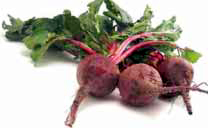When I get a visitor with food needs I haven’t met before, it’s a challenge I love. This week’s visitor eats meat, but has allergies to dairy and gluten. No dairy, no problem, but no gluten (wheat, oats, rye, barley) is a restriction I haven’t catered for yet.

Colourful and flavoursome
Last night I made this and served it with late-summer Romanian yellow beans (and I had feta cheese crumbled on top). There are endless variations you can try, including a bit of chicken or tuna grilled or pan-fried, any green veg such as Savoy cabbage, broccoli or chard; you can try different herbs with the polenta, different cheeses, either crumbled or melted on top… The choice is yours. But here’s what I concocted last night. [This long list of ingredients and instructions might look as if this post doesn’t qualify as “easy”, but I’d say it does – the recipe is flexible and forgiving, so unless you leave the polenta cooking while you have a bath, or don’t cook the Med Veg for long enough, it’s hard to go wrong. It’s not fiddly or over-precise, so it’s a good one for less experienced cooks.]
Seeded mamaliga
Mamaliga is the Romanian word for polenta, and is a staple food here. I find it – as normally served – like wallpaper paste, tasteless and gluey. but with a little extra something, then sliced and grilled, it becomes something altogether different.
Ingredients
300g maize meal or instant polenta
Boiling water
Big handful of fresh parsley (or 2 tablespoons of dried), chopped finely
Handful of sunflower seeds and sesame seeds
Toast the seeds till pale brown and set aside
Boil a kettleful of water and pour half into a large pan on full heat – when boiling, add the dry polenta/maize meal and stir vigorously (use a whisk to get rid of the lumps) for 15 mins or so (follow cooking instructions on packet), topping up with water as polenta thickens. Add the toasted seeds and the parsley, and a salt to taste – check seasoning several times. You want the polenta thick, but still pourable. When it gets to that point, pour it into a shallow dish and let it cool while you cook the veg.
Meanwhile…
Mediterranean veg
I call this Arthritis Relish because it consists of all the veg that do no good for arthritic hands – but they’re all so delicious I put up with a couple of days of discomfort.
Ingredients
1 aubergine (eggplant) – cubed into 1” pieces, skin on.
2 red peppers (bell peppers) – chopped into bite-sized pieces
1 medium onion
2 or 3 fat cloves of garlic, chopped or crushed
2 large tomatoes, chopped
1 chilli pepper, chopped – with out without seeds, depending on how hot you want it
Herbs of choice – basil, thyme, marjoram or a Provencal mix
A teaspoon of a spice mix like Baharat or Ras al Hanout
Salt & pepper
How to do it
Put all the ingredients in a big pot with plenty of oil (extra virgin olive, for preference) and frazzle slowly for at least 45 mins, so the aubergine has softened thoroughly and tastes sweet and rich. Check flavours and adjust seasoning if needed.
When cooked down to a jammy chunkiness, take off the heat and keep the lid on the pan.
By now the polenta wshould have cooled and set so that you can slice it; cut a slice for each person and put them under the grill or in the microwave for a few minutes to heat through. (If you’re all cheese-eaters, a bit of grated cheese of choice goes well on top of the polenta slices.)
On each plate: a slice of polenta, a scoop of Mediterranean veg, something green and leafy, and perhaps some crumbled feta cheese or grated Pecorino, and a good twist of black pepper.
NB There should be polenta left over (it’s very filling) – a grilled slice works very well as breakfast, topped with scrambled, poached or fried eggs, mushrooms or grilled tomatoes. And/or bacon, if you’re so inclined.
Tags: aubergine, Baharat, cook, garlic, gluten-free, healthy food, Home, Mămăligă, Polenta, red pepper, Romania, sesame, Southern Europe, sunflower seeds, tasty food, veg, vegan, vegetarian





![Pick-me-up porridge [photo by AMB] Pick-me-up recipe with cocoa, oats and spices](https://cheapeasydelicious.files.wordpress.com/2012/07/p7140018-pickmeup-porridge.jpg?w=490&h=382)


